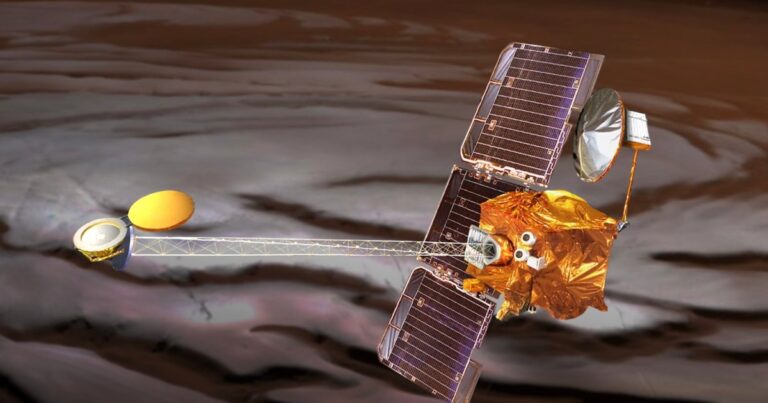
NASA’s Mars Odyssey rover is one of seven spacecraft currently orbiting the Red Planet (three of which are owned by NASA), taking images from above and performing a variety of tasks to help scientists learn more about the fourth planet from the sun.
On Sunday, the Mars Odyssey Orbiter completed its 100,000th orbit around the distant rocky planet since arriving there 23 years ago.
“During that time, the 2001 Mars Odyssey rover has mapped minerals and ice on the Martian surface, identified landing sites for future missions, and relayed data back to Earth from NASA’s rovers and landers,” NASA said in a website post commemorating the milestone. Those rovers and landers include the still-operational Perseverance and Curiosity rovers, as well as NASA’s InSight lander, which last communicated with the rover in late December 2022 after four years of operation.
The Odyssey orbiter recently captured new images of Olympus Mons on Mars, the highest volcano in the solar system. NASA said, “In addition to providing never-before-seen images of the volcano, the images will also help scientists study different layers of material in the atmosphere, including clouds and dust.”
The rover also successfully photographed NASA’s Ingenuity helicopter, which in 2021 became the first aircraft to achieve powered, controlled flight on another planet before retiring earlier this year.
Over the past few decades, the Mars Odyssey orbiter has taken approximately 1.4 million images and transmitted a massive 17.1 terabits of data to scientists.
“Sustaining a mission for such an extended period of time while maintaining our historic timeline of scientific planning and execution, and innovative engineering approaches, requires careful oversight,” said Joseph Hunt, Odyssey project manager at NASA’s Jet Propulsion Laboratory, which oversees the Odyssey mission, adding, “We look forward to collecting even more incredible science data in the coming years.”

